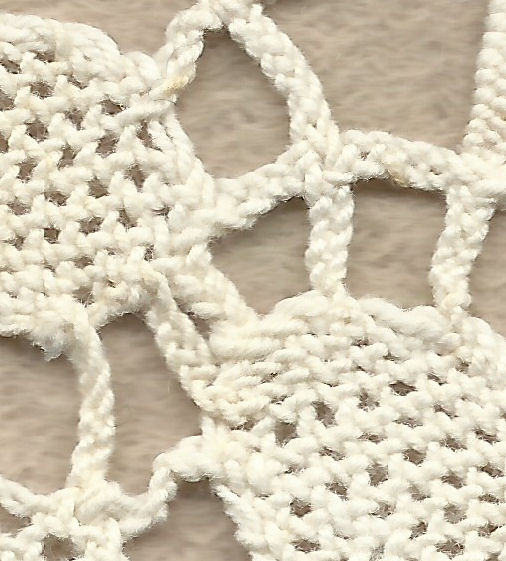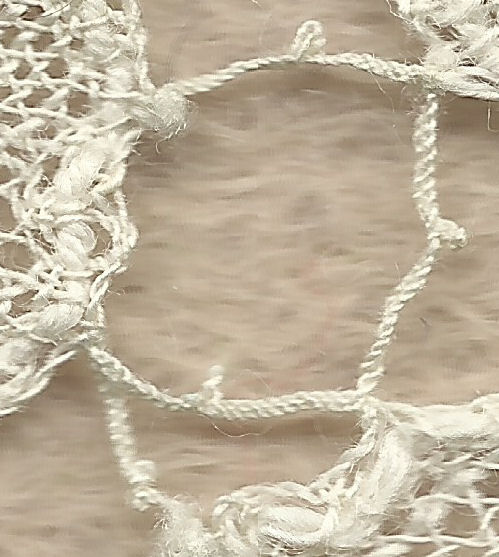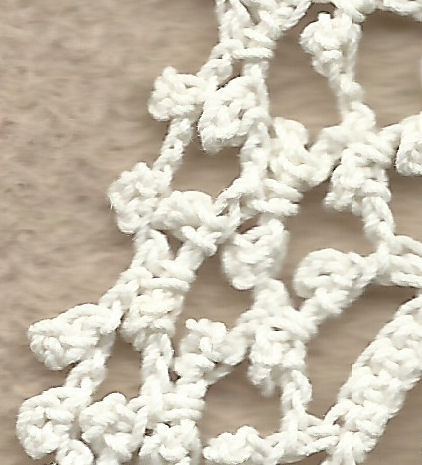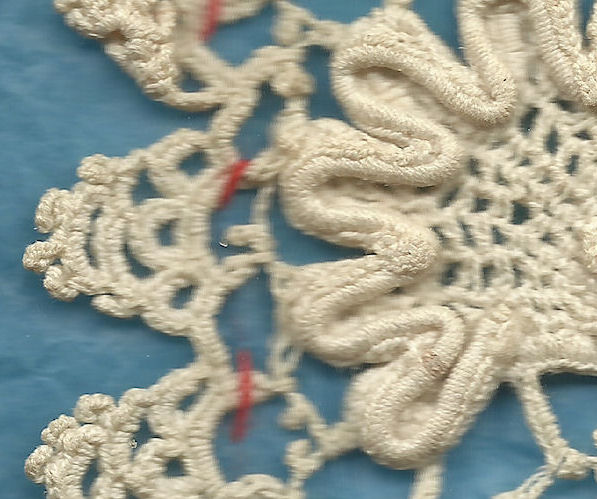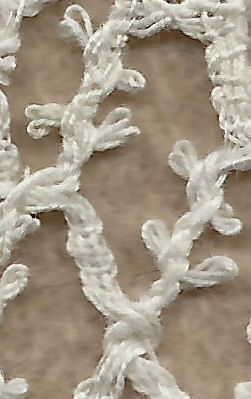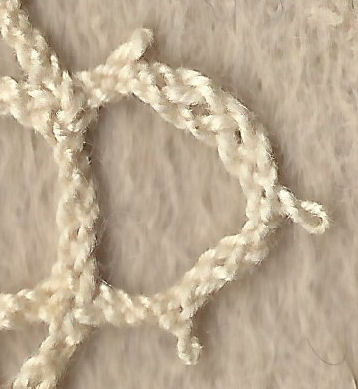
Legs are lines which join parts of lace together. In bobbin lace, they are made with two pairs of threads worked with continuous half stitch on top of each other. This gives the effect of a plait of four threads.
The technical description of half stitch is CT, or cross, twist. For a description of how legs or plaits are made, with an animation, click here.
In this example, picots decorate the legs in this Bedforshire lace. The legs cross over in a Lazy Join or Windmill. Here each pair is treated as a single unit, so the four pairs of the join are treated as four threads would be normally. This disturbs the normal under and over, which is unusual for bobbin lace. For a description of how a Lazy Join is made, with an animation, click here.
Click here for the whole piece of lace.

